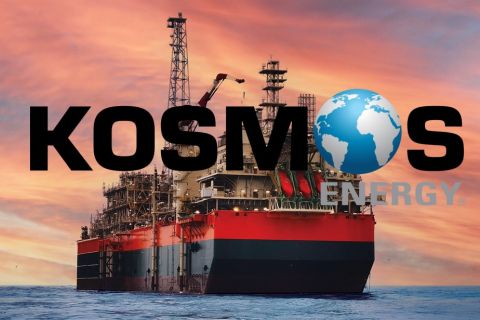
This story was updated on July 27, 2018, at 1:01 PM CST. It was originally posted at 3:57 PM CST on July 26, 2018. Check back for continuing updates.
Chesapeake Energy Corp. (NYSE: CHK) said July 26 that it has entered into an agreement to sell its interests in the Utica Shale operating area located in Ohio for about $2 billion to Encino Acquisition Partners (EAP), a private oil and gas company headquartered in Houston.
Encino was formed in 2011 by Hardy Murchison, who had previously spent 10 years First Reserve Corp. It is backed by capital from the Canada Pension Plan Investment Board (CPPIB), which invested in June 2017 to focus on U.S. acquisitions. Gibson, Dunn & Crutcher LLP represented Encino in the agreement.
Chesapeake's shares were initially up 7% on the news. They opened July 27 over 8% up as analysts started to weigh in.
Piper Jaffray’s Kashy Harrison says the valuation is below a recent comparable and current market multiples, but the execution of a transaction in the current environment should be the more "salient" takeaway for investors, according to Seeking Alpha.
Susquehanna’s Biju Perincheril believes the sale improves Chesapeake's longer-term flexibility, although immediate improvement to leverage ratio is modest given the sale at about 4 times EBITDA is roughly inline with Chesapeake’s current leverage.
Johnson Rice analyst Charles Meade says the deal metrics are not stellar but "good enough," although the key to Chesapeake's longer-term outperformance remains the Powder River Basin play.
RELATED ARTICLE: CPPIB: Canada's PE Heavyweight
The transaction, which is subject to certain customary closing conditions, including the receipt of third-party consents, is expected to close in fourth-quarter 2018.
The purchase price includes a $100 million contingent payment based on future natural gas prices and is subject to adjustment for certain customary items at/or following closing.
Chesapeake said in a news release that it intends to use the anticipated net proceeds to reduce debt.
Transaction highlights include:
- $1.9 billion initial closing proceeds to be applied toward reduction of debt;
- Up to $150 million reduction in annual cash interest expense;
- $450 million reduction of projected 2019 gathering, processing and transportation expense, for an expected improvement of about 50 cents per barrel of oil equivalent (boe);
- Eliminates all future Utica Shale midstream and downstream commitments of roughly $2.4 billion;
- Improves EBITDA by about 70 cents per boe in 2019, due to lower cash operating costs and improved oil differentials, assuming flat 2018 commodity prices;
- Organic replacement of divested EBITDA within one year, primarily driven by oil volume growth from the Powder River Basin (PRB);
- 2019 oil production expected to grow about 10% from 2018, adjusted for asset sales, with additional oil growth anticipated for 2020; and
- 2018 outlook updated to reflect business performance year to date and impact of pending transaction.
EAP released a statement confirming it is acquiring more than 900,000 net acres of leasehold spanning the condensate, liquids-rich and dry gas windows of the Utica play in Ohio. About 900 wells produce more than 600 million cubic feet of gas equivalent per day and hold 85% of the acreage. EAP plans to operate multiple drilling rigs on the properties to increase production and cash flow.
“At EAP, Encino and CPPIB are building a company focused on shareholder returns with top-notch people, carefully managed risk and sustainable, safe operations,” Murchison said in a statement. “With a multi-decade inventory of development projects held by 920 producing wells, the Utica acquisition provides an excellent start for EAP. We are excited to work with Chesapeake’s employees in the Utica and all other stakeholders in the state of Ohio. With a strong balance sheet and a partner of CPPIB's stature, EAP is well positioned for continued growth through drilling and acquisitions.”
“We are pleased to support EAP’s acquisition of these highly attractive Utica Shale assets, which provides CPPIB with meaningful exposure to a leading North American natural gas play and aligns with the growing focus on energy transition. This transaction represents a unique opportunity to acquire a foundational asset that has a large inventory of wells with a well-established production history, and will be managed by Encino, whose management has deep operational and development expertise in the Appalachian region,” said Avik Dey, managing director, head of energy and resources at CPPIB.
It was Chesapeake that discovered the Ohio Utica in 2011. At the time, the late Aubrey McClendon, CEO, famously said, “It would be the greatest thing to hit Ohio since the plow.”
Since then, Ohio’s oil and gas industry has dramatically changed. In first-quarter 2018, the state produced about 6 Bcf/d from over 1,900 horizontal shale wells, according to the Ohio Department of Natural Resources.
In announcing the deal, Doug Lawler, president and CEO, said in a statement, "Today's announcement makes Chesapeake a stronger and more competitive company. By divesting our position in the Utica and using the proceeds for debt reduction, we will not only significantly improve the health of our balance sheet, but we will also accelerate progress toward our strategic goals of reducing our debt, improving our margins and reaching sustainable free cash flow neutrality."
"Moving forward, we will continue to target our long-term goal of improving our leverage ratio to two times net debt to EBITDA. We remain committed to generating higher returns on invested capital by directing our investments to the highest-return opportunities across our five diverse, multizone basins. With the addition of a fifth rig earlier this month, we believe our position in the PRB will lead our organic oil volume growth, driving further leverage reduction, enhancing our margins and improving our free cash flow. As a result, we anticipate growing overall oil production approximately 10% year-over-year in 2019, adjusted for asset sales, with additional growth forecasted for 2020. The underlying strength of our portfolio, along with the overall price advantages we currently realize from our remaining oil assets, position Chesapeake to replace the divested EBITDA within a year following the close of the transaction.
"We are pleased with our updated 2018 Outlook reflecting our strong performance year to date, as well as adjustments assuming a 2018 fourth-quarter close of the Utica sale. While we are reducing our full-year natural gas and NGL volumes accordingly, we are raising our oil guidance by 500,000 barrels. We have also reflected the realized pricing and cost structure adjustments, resulting in a forecasted EBITDA level that is unchanged from our previous guidance that included the Utica for the full year. We are raising our capital expenditures slightly to reflect an accelerated capital program in the Utica on behalf of the buyer pre-closing, the cost of which will be settled in the post-closing adjustments, and increased drilling and completions activity in the PRB. Finally, we expect to seek a renewal and extension of our revolving credit facility in the 2018 third quarter. Pro forma collateral available for the new borrowing base, excluding the Utica assets, is expected to exceed $7 billion.
"Our unwavering commitment to reducing our debt, maintaining capital discipline, removing legacy complexities and simplifying our business has made Chesapeake more competitive. Over the past five years, we have fundamentally transformed all aspects of our company, eliminating more than $12 billion in total leverage, reducing our total midstream and downstream commitments by more than $10 billion, erasing more than $1 billion in annual cash costs, and removing operating leases, subsidiary preferred equity, four minimum volume commitments and nine volumetric production payments. We expect this transaction to improve our margins, result in greater capital efficiency and significantly reduce our outstanding debt. The depth of our assets, strength of our people and improvements highlighted here position Chesapeake to deliver increasing returns directly to our equity holders."
As part of the transaction, Chesapeake has agreed to sell all of its acreage in Ohio, of which about 320,000 net acres are in the commercial window for Utica Shale development, 920 operated and nonoperated wells which produced an average of roughly 107,000 boe per day (67% natural gas, 24% NGL and 9% oil) in 2017, on a net basis, and related property and equipment. Proved oil and natural gas reserves in the Utica Shale as of year-end 2017 were about 480 million boe (72% natural gas, 23% NGL and 5% oil).
The company also provided an update on its activities in the Powder River Basin in Wyoming, which it said continues to develop into the oil growth engine of the company. The company cited a 78% increase in net production compared to the average fourth-quarter 2017 rate.
On July 22, total net production hit a new record of about 32,000 net boe/d (42% oil, 41% natural gas and 17% NGL), compared to an average fourth-quarter 2017 rate of 18,000 boe/d.
Chesapeake now projects net production from the area will reach about 38,000 boe/d by year-end 2018, and expects total net annual production from the Powder River Basin to more than double in 2019 compared to this year.
Recommended Reading
Some Payne, But Mostly Gain for H&P in Q4 2023
2024-01-31 - Helmerich & Payne’s revenue grew internationally and in North America but declined in the Gulf of Mexico compared to the previous quarter.
Uinta Basin: 50% More Oil for Twice the Proppant
2024-03-06 - The higher-intensity completions are costing an average of 35% fewer dollars spent per barrel of oil equivalent of output, Crescent Energy told investors and analysts on March 5.
In Shooting for the Stars, Kosmos’ Production Soars
2024-02-28 - Kosmos Energy’s fourth quarter continued the operational success seen in its third quarter earnings 2023 report.
M4E Lithium Closes Funding for Brazilian Lithium Exploration
2024-03-15 - M4E’s financing package includes an equity investment, a royalty purchase and an option for a strategic offtake agreement.
California Resources Corp. Nominates Christian Kendall to Board of Directors
2024-03-21 - California Resources Corp. has nominated Christian Kendall, former president and CEO of Denbury, to serve on its board.





